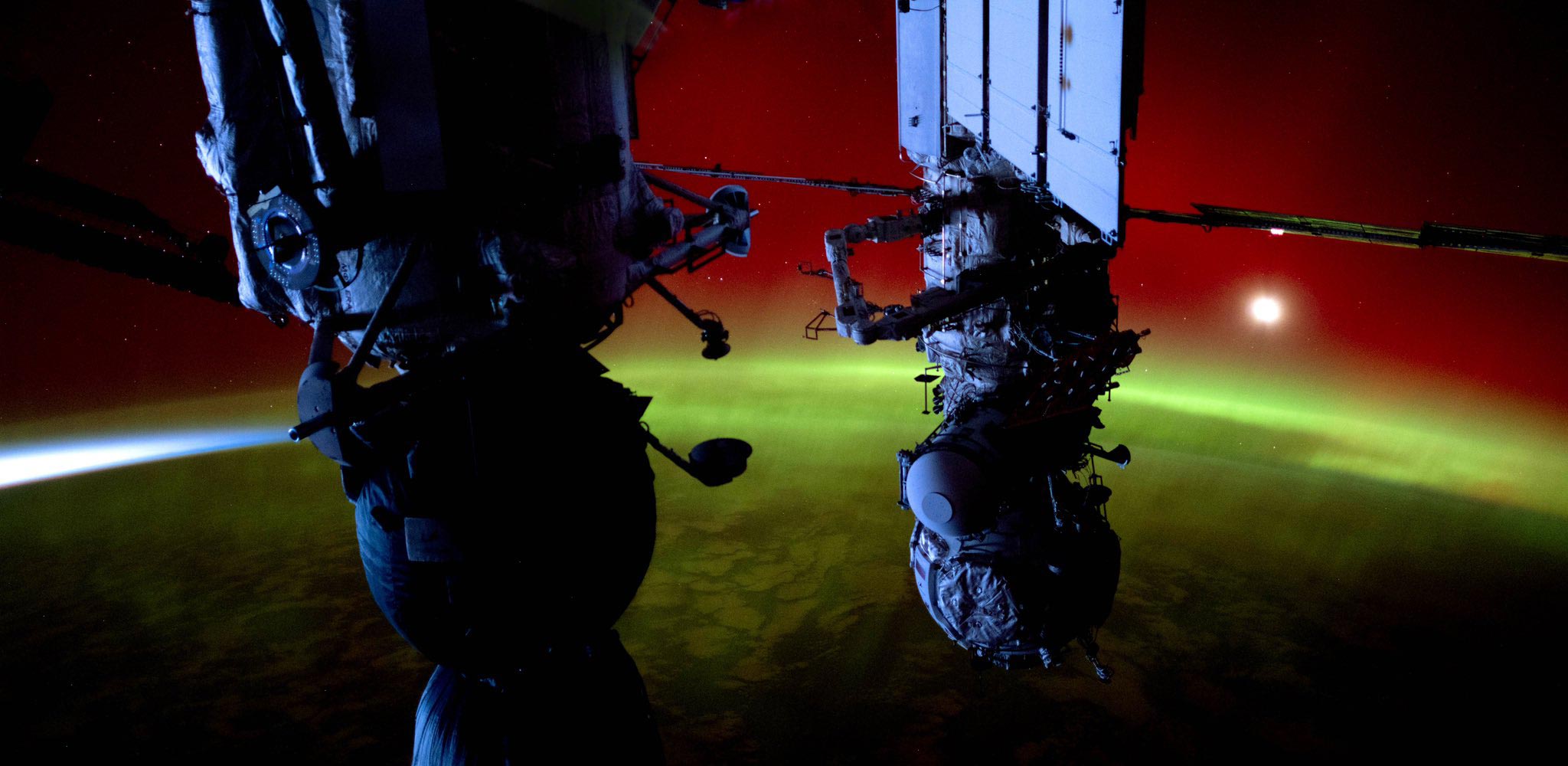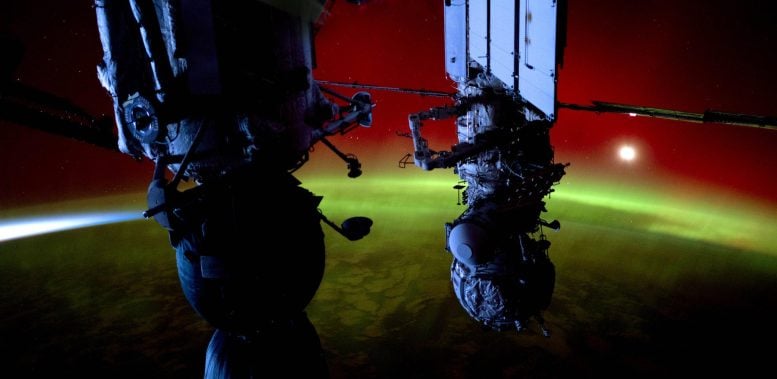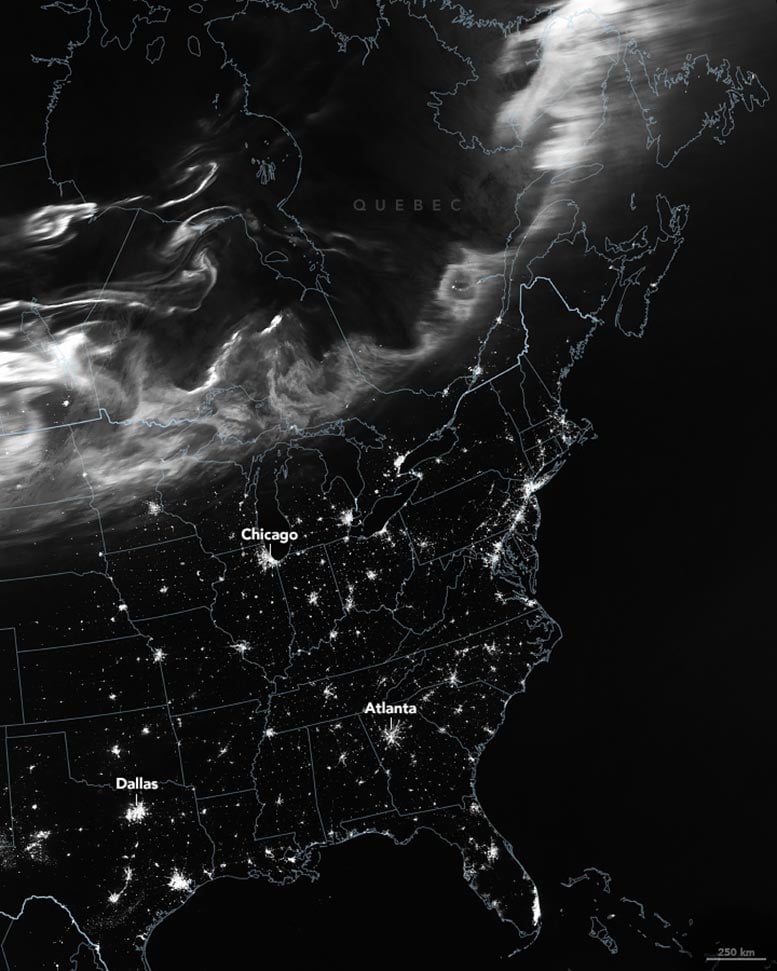

A powerful geomagnetic storm caused a spectacular display of light that was visible unusually far from Earth’s poles.
As solar cycle 25 reaches its peak, solar activity has increased significantly. This surge in activity was evident in October 2024 when a remarkable display of the aurora borealis, also known as the northern lights, extended to observers on the ground beyond the Arctic Circle to midlatitude regions.
Capturing the Aurora From Space and Ground
During the night of October 10-11, millions of skywatchers witnessed the aurora’s dazzling greens, pinks, and reds. On October 11, at 1:55 a.m. Eastern Time (05:55 Universal Time), the VIIRS (Visible Infrared Imaging Radiometer Suite) aboard the NOAA-20 satellite captured a striking image of this event. The VIIRS day-night band is adept at detecting nighttime lights across a spectrum from green to near-infrared, which allows it to record various light sources, including city lights, reflected moonlight, and the vibrant auroras.

In this view, the northern lights appear as ribbons of white crossing parts of Minnesota, Wisconsin, and Michigan in the U.S., and several provinces in Canada. But auroras are dynamic, and different coverage and patterns of light would have been visible at other times of the night. While these satellite data are shown in grayscale, viewers on the ground saw colors from green (the most common) to purple to red. Atmospheric compounds found at different altitudes influence an aurora’s color.
The Science Behind the Northern Lights
An astronaut on the International Space Station captured the photograph below of green hues of the aurora dancing across the planet’s surface, with a layer of deep red light above.
The sun goes burp and the atmosphere turns red. Spectacular not only from Earth but from orbit as well. This event caught both @dominickmatthew and I off guard. Aurora had been just so-so; we were out of energy at the end of a long day and reluctant to once again set up our… pic.twitter.com/gL6rjUiHJQ
— Don Pettit (@astro_Pettit) October 11, 2024
Geomagnetic Storms and Their Impact
The light show was the visible manifestation of a severe geomagnetic storm—a disturbance of the upper atmosphere caused by the interaction of pressure waves and electromagnetic energy from the Sun interacting with Earth’s magnetic field, or magnetosphere.
In this case, the storm was caused by energized material emitted from the Sun, also known as a coronal mass ejection, that occurred in tandem with an intense solar flare on October 8, 2024. Whereas solar flares reach the planet in a matter of minutes and interfere with radio communications, coronal mass ejections may take several days to travel to Earth.
Coronal mass ejections contain large amounts of plasma from the Sun’s corona and carry with them an embedded magnetic field. Interactions between these expulsions from the Sun and the upper atmosphere of Earth produce the colorful auroral displays. According to NOAA’s Space Weather Prediction Center, the storm ranked 4 out of 5 in severity.
The aurora was visible from many areas worldwide, including latitudes where sightings of auroras are uncommon. Auroras occur high in the atmosphere, so observers on the ground can potentially witness them from far away—well beyond the areas covered by the band of light in the satellite image at the top of this page. Photographs of the aurora were shared from Nevada, North Carolina, Arizona, and Texas. The National Weather Service in Lubbock, Texas, shared photos of the aurora in shades of pink and green.
NASA Earth Observatory image by Michala Garrison, using VIIRS day-night band data from NASA EOSDIS LANCE, GIBS/Worldview, and the Joint Polar Satellite System (JPSS).